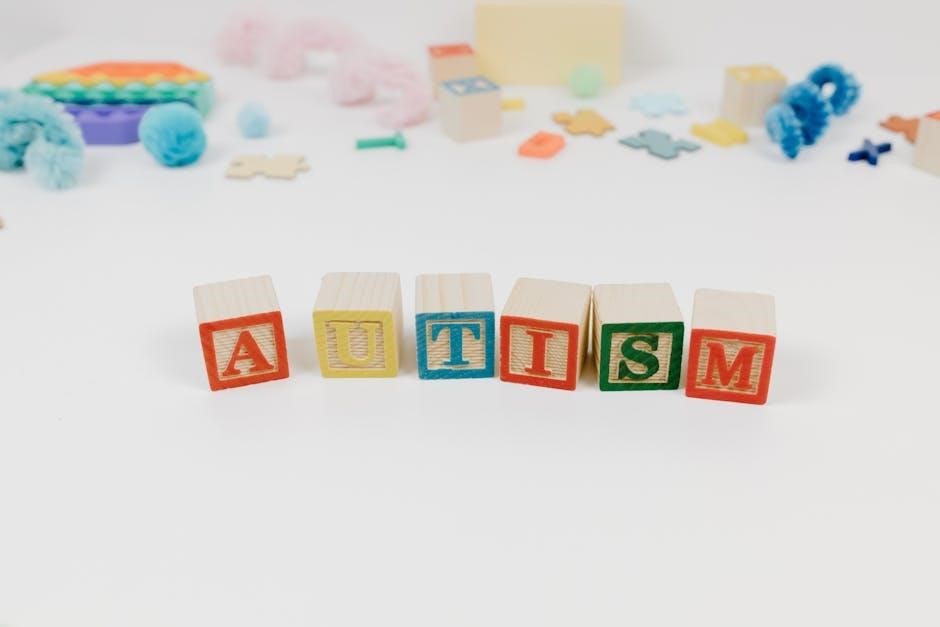the whole brain child pdf
Overview of “The Whole-Brain Child”
“The Whole-Brain Child”, co-authored by Daniel Siegel and Tina Payne Bryson, offers revolutionary strategies rooted in neuroscience․ It aims to help parents understand their child’s developing mind, address challenges like meltdowns, and nurture resilience․ The book provides practical tools for fostering healthier, happier, and more fully developed children․
Key Concepts Explained
The book explores key concepts like integrating the left and right brain, connecting before redirecting, and using the “Name It to Tame It” strategy․ These concepts provide a framework for understanding how a child’s brain works and how to respond effectively to their emotional needs and developmental stages․
Integrating Left and Right Brain
“The Whole-Brain Child” emphasizes the importance of integrating the left and right hemispheres of a child’s brain․ The left brain is logical, linear, and language-oriented, focusing on facts and reasoning․ The right brain is more emotional, intuitive, and deals with nonverbal cues and feelings․ Integrating these two sides is vital for healthy emotional and cognitive development․
When children experience difficulties, it’s often due to one hemisphere dominating the other․ For example, during a meltdown, the right brain might be overwhelmed with emotions, hindering the left brain’s ability to reason and problem-solve․ The book offers strategies to help parents encourage their children to use both sides of their brain in a balanced way․
Techniques include helping children tell stories that incorporate both factual details (left brain) and emotional content (right brain), encouraging creative expression alongside logical thinking, and teaching them to be aware of their own feelings and how those feelings influence their thoughts and behaviors․ By integrating these two sides, children can develop a more complete and balanced understanding of themselves and the world around them, leading to greater emotional regulation and resilience․
Connecting Before Redirecting
“The Whole-Brain Child” introduces the concept of connecting before redirecting, a crucial strategy for managing challenging behavior in children․ This approach prioritizes establishing an emotional connection with a child before attempting to correct or redirect their actions․ It acknowledges that when children are upset, their emotional right brain is dominant, making it difficult for the logical left brain to engage․
Connecting involves empathy, validation, and active listening․ Parents are encouraged to respond to their child’s emotions with understanding and compassion, creating a safe space for them to express their feelings․ This might involve physical touch, verbal reassurance, or simply reflecting back what the child is saying to show that they are being heard․
Only after a connection has been established can redirection be effective․ Once the child feels understood and supported, they are more receptive to reason and guidance․ Redirection involves engaging the child’s left brain by helping them understand the consequences of their actions and explore alternative solutions․ By connecting first, parents can foster a stronger relationship with their children and teach them valuable emotional regulation skills․
“Name It to Tame It” Strategy
The “Name It to Tame It” strategy, popularized in “The Whole-Brain Child”, offers a simple yet powerful technique for helping children manage overwhelming emotions; This strategy centers around encouraging children to verbalize their feelings, essentially naming the emotion they are experiencing․ By putting a name to their feelings, children can begin to understand and process them more effectively, thereby reducing the intensity of the emotion itself․
The act of naming an emotion engages the left brain, the logical and reasoning part of the brain, which can help to regulate the emotional right brain․ When a child is in the throes of a tantrum or experiencing intense fear, their right brain is often in overdrive․ By prompting them to describe what they are feeling, parents can help them integrate their left brain, bringing a sense of calm and control to the situation․
This strategy also encourages emotional literacy, helping children develop a broader vocabulary for expressing their feelings․ Over time, children become more adept at recognizing and labeling their emotions, empowering them to manage their emotional responses in a healthy and constructive manner․ “Name It to Tame It” is a valuable tool for fostering emotional intelligence and resilience in children․

Practical Strategies and Techniques
“The Whole-Brain Child” provides a wealth of practical strategies and techniques designed to nurture a child’s developing mind․ These techniques are grounded in the principles of interpersonal neurobiology, aiming to promote integration between different parts of the brain․ One core strategy involves connecting with a child’s right brain before redirecting with the left․ This means empathizing with their emotions and validating their feelings before attempting to reason or problem-solve․
Another key technique is the “Name It to Tame It” strategy, where children are encouraged to verbalize their emotions in order to gain control over them․ Storytelling is also emphasized as a tool for integrating different parts of the brain and making sense of experiences․ By helping children create narratives around their experiences, parents can help them process emotions and develop a coherent sense of self;
The book also offers practical advice on handling challenging situations, such as meltdowns and tantrums․ It emphasizes the importance of understanding the underlying causes of these behaviors and responding in a way that is both supportive and effective․ Through these practical strategies and techniques, “The Whole-Brain Child” empowers parents to foster their child’s emotional intelligence, resilience, and overall well-being․
Addressing Meltdowns and Tantrums
“The Whole-Brain Child” offers invaluable insights into addressing meltdowns and tantrums, viewing them not as acts of defiance but as opportunities for connection and teaching․ The book emphasizes understanding the neurological basis of these episodes, explaining that they often occur when a child’s emotional brain overwhelms their rational brain․
A key strategy involves connecting with the child’s right brain first, offering empathy and validation before attempting to reason or redirect․ This might involve physical comfort, mirroring their emotions, and letting them know they are heard and understood․ Once the child feels connected and soothed, it becomes easier to engage their left brain and help them process the situation logically․
The book also advocates for teaching children emotional regulation skills, such as identifying and naming their feelings․ The “Name It to Tame It” strategy helps children gain control over their emotions by verbalizing them․ Furthermore, the authors stress the importance of parental self-regulation, as children often mirror their parents’ emotional responses․ By remaining calm and grounded during a meltdown, parents can model healthy coping mechanisms and help their child navigate their intense emotions․

Authors: Daniel Siegel and Tina Payne Bryson
Daniel J․ Siegel, M․D․, is a renowned neuropsychiatrist and the Executive Director of the Mindsight Institute․ He is also a clinical professor of psychiatry at the UCLA School of Medicine and the author of numerous books, including “Mindsight” and “Brainstorm․” His work focuses on interpersonal neurobiology, which explores the connections between the brain, mind, and relationships․ Siegel’s expertise in how the brain functions and develops has made him a sought-after speaker and consultant in the fields of mental health and education․
Tina Payne Bryson, Ph․D․, is a psychotherapist and parenting expert․ She is the co-author, along with Daniel Siegel, of several bestselling books, including “The Whole-Brain Child” and “No-Drama Discipline․” Bryson’s work centers on understanding children’s emotional and cognitive development and providing parents with practical strategies for raising resilient and well-adjusted children․ She is known for her engaging and accessible approach to complex topics, making her a popular speaker and consultant for parents, educators, and therapists․ Together, Siegel and Bryson bring a unique blend of scientific knowledge and practical experience to their work, offering parents valuable insights and tools for nurturing their children’s development․

Benefits of Applying the Whole-Brain Approach
Applying the whole-brain approach, as detailed in Siegel and Bryson’s work, offers numerous benefits for both children and parents․ Firstly, it fosters a deeper understanding of a child’s emotional and cognitive development, enabling parents to respond more effectively to their child’s needs․ By understanding how different parts of the brain work together, parents can help their children integrate their experiences and develop emotional regulation skills․
Secondly, the whole-brain approach promotes stronger parent-child relationships․ By connecting with their child’s emotions before redirecting their behavior, parents create a sense of safety and trust․ This approach also helps children feel understood and validated, which strengthens their bond with their parents․ Moreover, the whole-brain approach equips children with valuable life skills, such as problem-solving, empathy, and resilience․ They learn to navigate their emotions, manage conflicts, and build healthy relationships․ Ultimately, applying the whole-brain approach leads to happier, healthier, and more well-adjusted children who are better prepared to thrive in all aspects of their lives․ This approach fosters a more harmonious and supportive family environment․

Workbook and Practical Exercises
To complement “The Whole-Brain Child,” a companion workbook provides practical exercises and activities designed to reinforce the book’s concepts․ These exercises offer hands-on opportunities for both parents and children to apply the whole-brain strategies in everyday situations․ The workbook includes worksheets that encourage reflection, communication, and problem-solving․
Activities are designed to help children develop emotional awareness, learn to integrate their left and right brains, and practice effective communication skills․ Parents can use these exercises to guide their children through challenging emotions, facilitate meaningful conversations, and create a stronger connection․ Furthermore, the workbook provides tools for addressing specific issues such as tantrums, sibling rivalry, and anxiety․ By engaging in these practical exercises, families can create a more supportive and understanding environment․ The workbook serves as a valuable resource for parents seeking to implement the whole-brain approach and nurture their child’s developing mind․ It is also a good and valuable resource for professional use․
